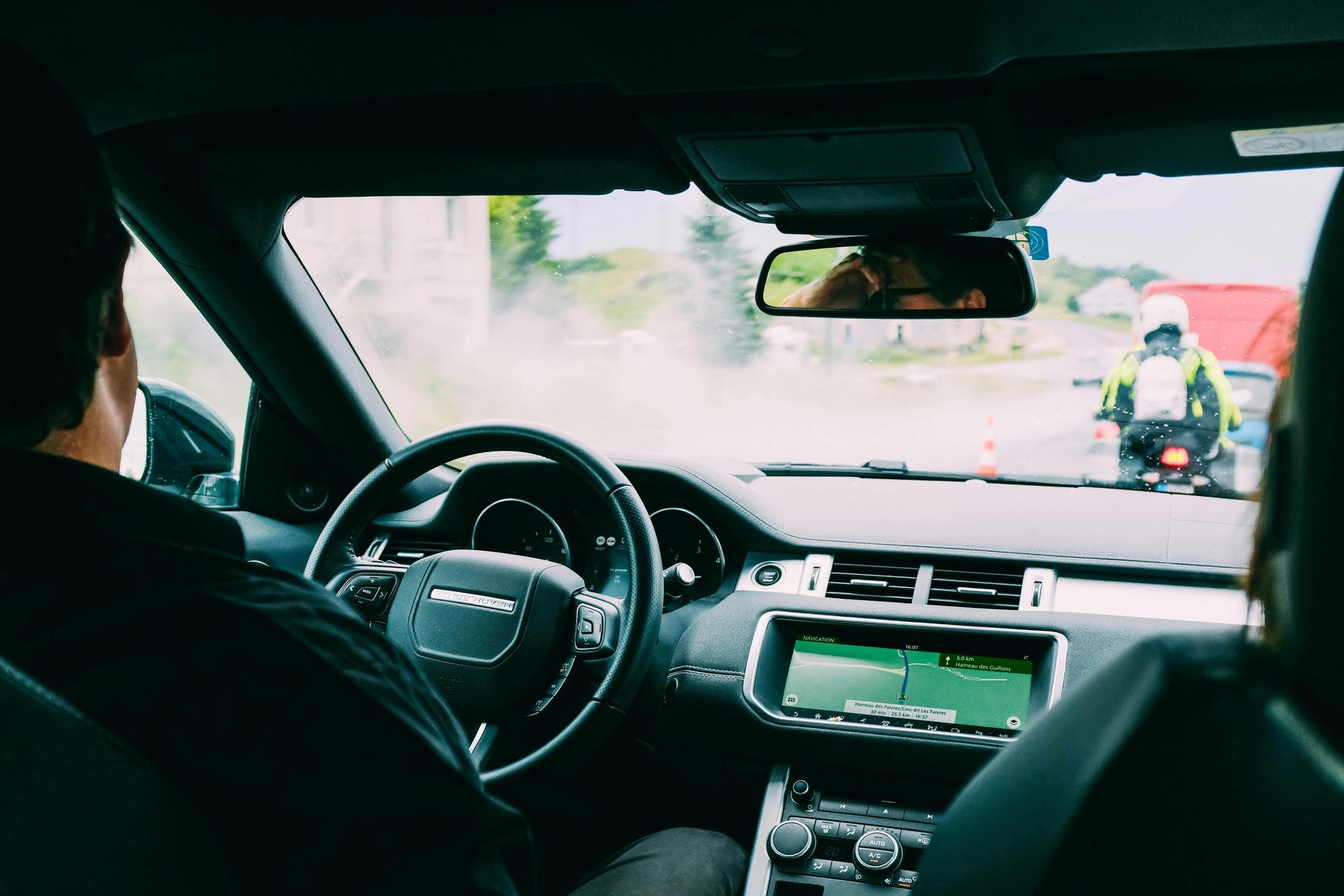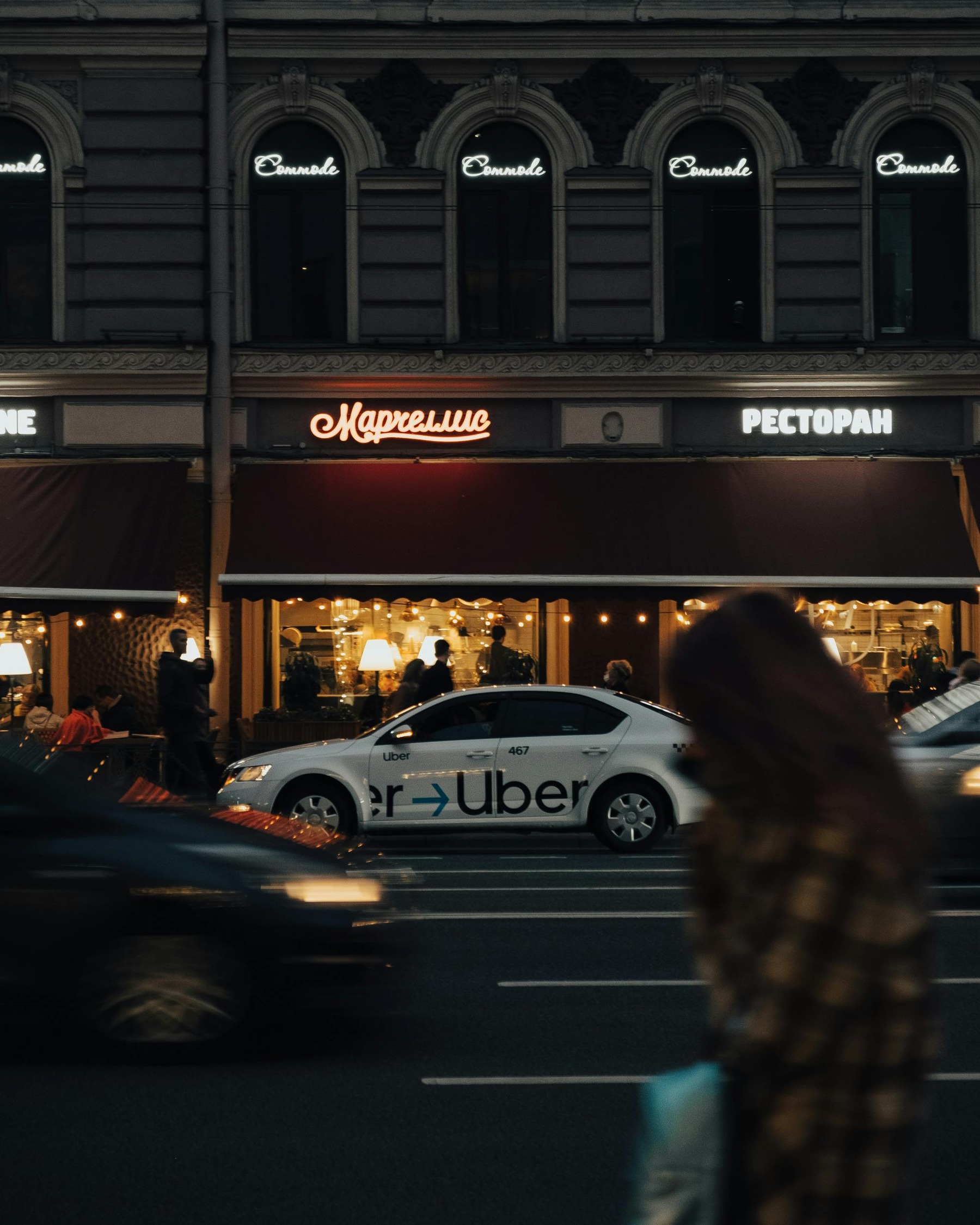Safety is a critical factor of choosing a ride-sharing service because you are technically getting into a stranger’s car. It’s important to research your options to make sure you choose safety first. Now, onto the main debate, Uber vs Lyft: Which is safer? Here are some details that can help you decide.
Uber vs Lyft: Which Is Safer?
When comparing the safety of Uber and Lyft, it’s important to focus on the measures in place, such as driver screening, innovative safety features, and the systems designed to handle incidents.
Company Background: Uber
Uber, founded in 2009, pioneered the app-based ride-hailing concept. It rapidly disrupted the traditional taxi industry by connecting riders with drivers through a simple, user-friendly platform. Starting in San Francisco, Uber’s aggressive growth strategy led to swift expansion across the globe. Today, it boasts a presence in over 900 cities across more than 70 countries.
Safety Measures
Uber has made substantial investments in safety features and initiatives:
- Driver background checks: Drivers undergo thorough background checks, including driving history and criminal record checks.
- GPS tracking: Real-time tracking of rides allows riders to share their trip details with friends and family and provides a record of the trip in case of any issues.
- In-app emergency button: An easily accessible button within the app allows riders to quickly connect with emergency services if needed.
- RideCheck: This feature detects unusual events during trips, such as long stops or unexpected route deviations, and prompts rider/driver check-ins to monitor safety.
- Two-factor authentication: Adds an extra layer of security to user accounts, requiring a second form of verification in addition to a password.
Pricing
Uber’s pricing model is dynamic, taking into account various factors to calculate fares:
- Base fare: A fixed charge that applies at the start of every trip.
- Distance and time: The fare increases based on the distance traveled and the duration of the trip.
- Surge pricing: During periods of high demand, such as rush hour or major events, Uber implements surge pricing, temporarily increasing fares to incentivize more drivers to get on the road.
- Service type: Different service categories have varying base fares and per-mile/minute rates, with premium services commanding higher prices.
Company Background: Lyft
Lyft, founded in 2012, also emerged from San Francisco and charted a somewhat different course. While its initial growth trajectory was less explosive than Uber’s, it strategically focused on the US and Canadian markets. Lyft cultivated a reputation as the “friendlier” alternative, emphasizing community building and positive driver relations.
Safety Measures
Lyft has also implemented a range of safety measures to protect riders and drivers:
- Driver background checks: Similar to Uber, Lyft conducts comprehensive background checks on drivers.
- GPS tracking: Real-time tracking is available for Lyft rides.
- In-app emergency assistance: Riders can easily contact emergency services through the app in the event of an occurrence like an auto accident.
- Continuous criminal monitoring: Lyft continuously monitors drivers for any new criminal offenses, ensuring ongoing safety.
- Community Safety Program: Lyft partners with local organizations to promote safety and address community-specific concerns.
Pricing
Lyft’s pricing structure shares similarities with Uber’s, incorporating the following components:
- Base fare: A fixed charge similar to Uber’s.
- Distance and time: Fares increase with the distance and duration of the trip.
- Prime Time: Lyft’s equivalent of surge pricing, increasing prices during peak hours.
- Service type: As with Uber, different Lyft service categories have varying pricing structures.
Similarities and Differences Between Uber and Lyft
As a rider looking to use either one or both services at some point, it’s important to see how they compare. This way, you know what to expect and can make a better-informed choice.
Similarities
- Both companies operate as rideshare platforms, connecting riders with drivers via their smartphone apps. Users can request a ride, track its progress, and make cashless payments within the app.
- They offer a range of service tiers, from standard rides (UberX/Lyft) to shared rides (UberPool/Lyft Shared) and luxury options (Uber Black/Lyft Lux). Both also offer larger vehicles for groups.
- Both prioritize rider and driver safety with similar features, including driver background checks, GPS tracking, in-app emergency buttons, and initiatives to address safety concerns.
Differences
- Uber operates globally, while Lyft is primarily focused on the US and Canada. This means Uber offers wider international coverage.
- Uber has diversified into food delivery (Uber Eats) and freight services (Uber Freight), while Lyft currently focuses solely on ride-hailing and car rentals.
- While both prioritize safety, they implement slightly different measures. Lyft has a continuous criminal monitoring program, while Uber’s RideCheck detects unusual events during trips.
Factors Affecting Safety
- Driver training: While both companies provide some level of driver training, the extent and quality of this training may vary. Factors such as the duration of training, the topics covered, and the assessment methods can influence driver safety.
- Driver fatigue: Addressing driver fatigue is vital for preventing accidents. This includes factors such as working hours, scheduling practices, and the availability of rest breaks.
- Vehicle maintenance: Ensuring that vehicles used for ride-hailing services are well-maintained is important for safety. This involves regular inspections, maintenance, and addressing any mechanical issues promptly.
While both Uber and Lyft have taken steps to improve safety, accidents can still occur. Accident attorneys can play a vital role in representing individuals who have been injured in accidents involving ride-hailing services. By understanding the specific safety protocols, accident statistics, and factors affecting safety, attorneys can effectively advocate for their clients and seek appropriate compensation.
Request Your Free Consultation
"*" indicates required fields
Which Service is Better?
As per safety reports released in 2019 and 2021, Uber revealed 208 Uber-related fatalities in the US between 2017 and 2020. Lyft’s safety report indicates 105 fatalities between 2017 and 2019.
Lyft
| Year | Motor Vehicle Fatalities | Rate per 100 Million Vehicle Miles Traveled |
|---|---|---|
| 2017-2019 | 105 | 0.76 |
| 2020 | 25 | 0.68 |
| 2021 | 36 | 0.86 |
| 2022 | 50 | 1.02 |
Uber
 How Much Is Your Settlement Worth?
How Much Is Your Settlement Worth?
Schedule a completely free, no obligation consultation with our team
Schedule Consultation
| Year | Motor Vehicle Fatalities | Rate per 100 Million Vehicle Miles Traveled |
|---|---|---|
| 2017-2018 | 107 | 0.58 |
| 2019-2020 | 101 | 0.62 |
| 2021-2022 | 153 | 0.87 |
Ultimately, the numbers suggest that Lyft is safer for passengers. However, it’s important to also consider the fact that Uber records more trips, which brings the ratio of incident to trip down compared to Lyft. Both services are relatively safe and have stringent measures in place to protect riders. Although both companies have strict measures in place for ride safety, passengers should also remember that accidents can occur at any time.
In case of an unforeseen event, like an accident, riders should consider getting in touch with an experienced accident attorney to plan the next steps and seek compensation for any personal injuries or damages.
Related Questions
How Do I Stay Safe With Uber or Lyft?
Confirming the driver’s details is vital when riding with a ride-hailing service. Additionally, ask the driver to verify your name before you get in the car. Use the in-app feature to share your trip details with a trusted friend or family member. Choose the back seat whenever possible, increasing the physical space between yourself and the driver.
Is It Better to Use Uber or Lyft?
Uber is available in numerous countries and provides a broader global reach, which can be a strong advantage if you’re a frequent traveler. Lyft operates exclusively in the United States and Canada. Uber, with its substantial market presence, has often been the go-to service, however, Lyft’s commitment to annual background checks could add an extra layer of reassurance about safety.
What Are the Risks of Uber and Lyft?
Potential risks during your trip range from car accidents, which are a possibility in any vehicle, to more unsettling incidents of assault or misconduct. Driver screening processes may not always be failproof. It’s also important for you to consider the privacy risks when ridesharing, as sharing personal information can lead to issues like scams or even stalking.
Conclusion
When you compare both services, Uber tends to make their driver screenings and vehicle inspections more comprehensive. This is in addition to rider protection features. Remember, your safety also depends on making informed choices, such as checking your driver’s rating and vehicle information before starting the trip. Regardless of your choice, both services have features in place to guarantee passenger safety.

Allen Vaysberg practices personal injury law and works tirelessly to defeat the tactics of insurance companies and large corporations who try to deny justice and fair compensation to injured people.



